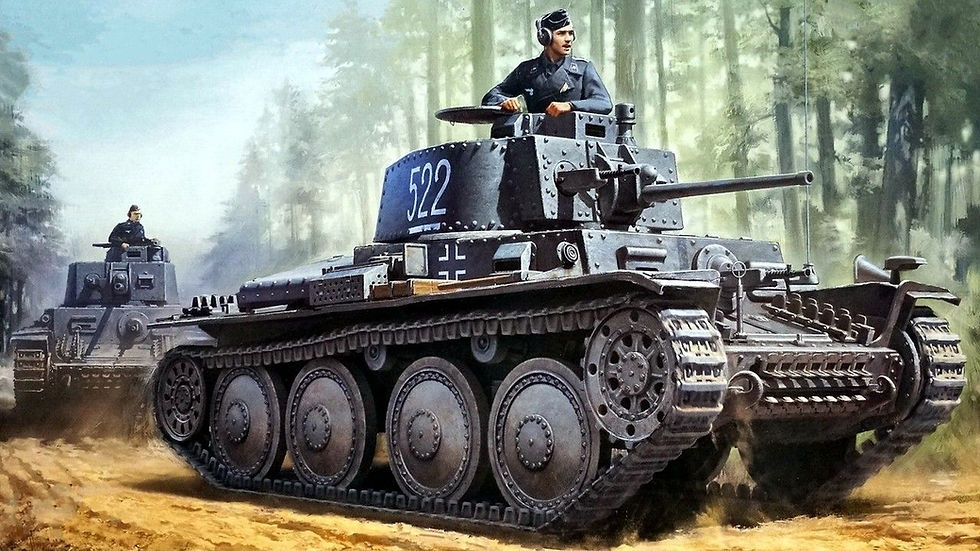From Captured Design to Versatile Legacy: The Panzer 38(t) and Its Impact on WWII Military Vehicles
- kismber
- Sep 12, 2023
- 2 min read
Updated: Sep 13, 2023

The Panzerkampfwagen 38(t), often referred to simply as the Panzer 38(t), was a remarkable and versatile tank that played a pivotal role in the early stages of World War II. While its combat performance was notable in its own right, it is equally significant for its role as a platform for various other military vehicles. This article explores the history of the Panzer 38(t), its design features, combat effectiveness, and its enduring legacy as a platform for a range of military applications.
Historical Background: The Panzer 38(t) was a Czechoslovakian tank design that found itself at the center of the geopolitical turmoil in Europe during the late 1930s. In 1938, Czechoslovakia, facing increasing pressure from Nazi Germany, was forced to surrender a portion of its territory, including its formidable arms industry, to appease Adolf Hitler. This included the Skoda Works, a renowned arms manufacturer. Among the assets gained by Germany was the design for the LT vz. 38, a capable tank developed by Skoda.
Adaptation and Improvements: Upon capturing the LT vz. 38, the Germans quickly recognized its potential. They modified the design to meet their specifications, notably rearming it with the more powerful 37mm KwK 38(t) gun. The resulting tank was designated as the Panzerkampfwagen 38(t), the "(t)" signifying its Czech origin. The tank featured a well-balanced design, with good armor protection for its time and a robust chassis.

Combat Effectiveness: The Panzer 38(t) proved its mettle on the battlefield during the early stages of World War II. It was used in the invasions of Poland, France, and the Soviet Union. Its relatively small size, good mobility, and effective 37mm gun made it a valuable asset, especially in the blitzkrieg tactics employed by the German military. The tank was reliable and well-suited for infantry support and reconnaissance missions.
Legacy as a Platform: However, what truly sets the Panzer 38(t) apart is its enduring legacy as a platform for various other military vehicles. Its robust chassis and engine served as a basis for a multitude of adaptations. Some notable variants and uses include:
Marder III: The Panzer 38(t) chassis was utilized to create tank destroyers like the Marder III, mounting a more potent anti-tank gun.
Hetzer: The tank was the foundation for the Jagdpanzer 38(t) Hetzer, one of the most effective tank destroyers of the war.
Flakpanzer 38(t): It was adapted into a self-propelled anti-aircraft gun, providing mobile air defense for German forces.
Artillery Observers: Some Panzer 38(t) tanks were converted into artillery observation vehicles, demonstrating its versatility.

Conclusion: In summary, the Panzerkampfwagen 38(t) was more than just a capable tank; it was a versatile platform that contributed significantly to the German war effort during World War II. Its adaptability and robust design allowed it to serve as a basis for various other military vehicles, extending its impact far beyond its role as a frontline tank. Its legacy is a testament to the ingenuity of military engineering during a tumultuous period in history, showcasing how a captured design could be transformed into a versatile and effective military asset.
